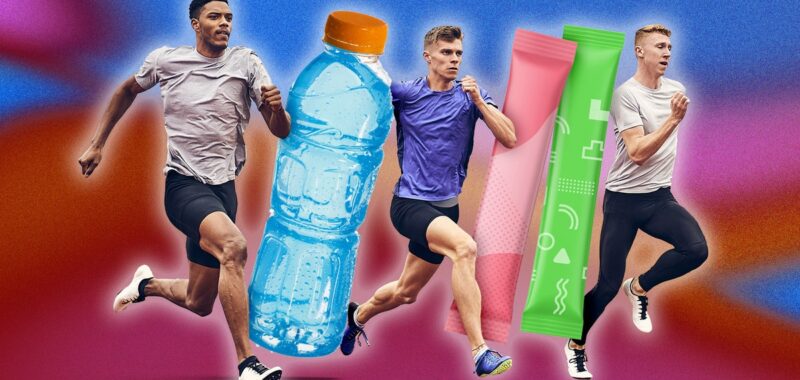Replenishing electrolytes—especially sodium—helps your body retain fluids, sustaining nerve function, energy production in our muscle cells, and promoting muscle function.
Why they are so popular right now
COVID lockdowns made more of us aware of our health and as a result, more of us got into long-distance sports like running. A few years later, our initial attempts at the local 5k have morphed into half marathons, marathons, and beyond. It makes sense, then, that we want to fuel ourselves properly. It’s a bit of a chicken and egg situation, but to generalize, as we’ve become more aware of wellness, the supplement and drinks markets have responded with new products to fit our needs.
How should we use them?
For Viktoriya Tkachuk, a three-time Olympian who represented Ukraine in the hurdles in Rio, Tokyo, and Paris and who also works as a running consultant, staying on top of her electrolyte intake is essential.
“I typically take electrolytes daily, both during training and recovery,” she says. “During training, especially during long or hot sessions, I consume electrolyte drinks that contain a balanced mix of sodium, potassium, magnesium, and calcium. This helps prevent cramping, maintain endurance, and keep my body functioning efficiently. In addition to sports drinks, I sometimes use electrolyte tablets or powders that can be mixed with water for easier control over intake.”
Tkachuk says she aims to start a race well-hydrated, and will drink a sports drink or use electrolyte tablets in water up to an hour before the start.
“The key is timing—[I take electrolytes] pre-training, during intense sessions, and after training for recovery,” she says. “This ensures my muscles recover well, and I’m ready for the next session. Electrolytes are non-negotiable in my regimen, especially in a demanding event like the 400-meter hurdles, where the combination of speed, power, and endurance is crucial.” Post-race, she’ll take an electrolyte-rich drink within 30 minutes of finishing.
Tkachuk learned the importance of electrolytes the hard way. “One of my worst experiences from not taking electrolytes properly happened during an intense summer training session in 2019,” she says. “It was a high-volume day with a lot of interval work, and the temperatures were soaring. I didn’t hydrate adequately beforehand, and I hadn’t taken in enough electrolytes during the earlier part of the session.
“About halfway through, I started feeling lightheaded, and my legs began to cramp. It wasn’t just the typical muscle fatigue; my lower body felt tight and unresponsive. I pushed through a few more intervals, but it became clear that my performance was suffering. Eventually, the cramping became so severe that I had to cut the session short.
“Since then, I have never taken hydration and electrolytes lightly—whether it’s training or competition—and I always ensure my body is adequately replenished.”
What can you do to bring your electrolyte training up to Olympic standards? Ruani suggests tracking your fluid losses by weighing yourself before and after exercise, adjusting for any fluids you’ve consumed. “Ideally, you should drink approximately 1.2 and 1.5 times the weight of fluid lost during exercise. One liter of sweat is roughly equivalent to one kilogram of bodyweight loss.”
Like Tkachuk, you should also start early. Ruani recommends beginning your hydration with 14 to 20 oz of a sodium-containing drink between three and two hours beforehand. “Leaving it until you feel thirsty before taking a drink is too late. At this stage dehydration has already set in,” she warns.
During exercise, Ruani says you should aim to drink small amounts every 15-20 minutes, especially if the event lasts longer than an hour. “This helps prevent dehydration from exceeding 2% body weight loss, which is critical for maintaining performance.”
For a more tailored approach, Ruani suggests following the American College of Sports Medicine recommendation: Consume 5 to 7 mililiters of fluid per kg of body weight slowly between 4 and 2 hours before exercise. “This method promotes optimal hydration while allowing enough time for your body to excrete any excess water.”
We’ll drink to that.
This story was originally published in British GQ.

